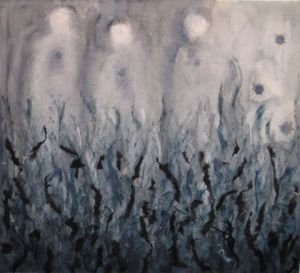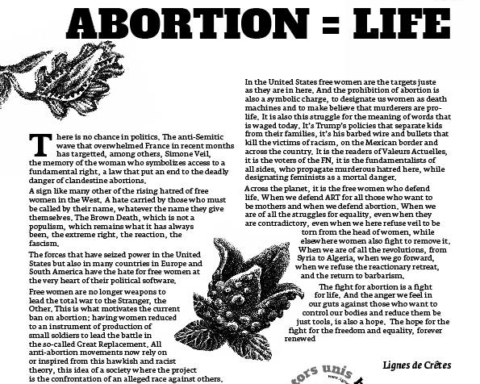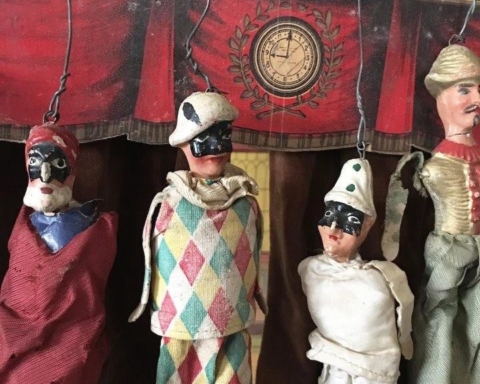It is significant that, all of a sudden, one remembers there that Arab springs happened in 2011. But using this recollection to legitimize the French Yellow Vest movement, is showing a misunderstanding of these two movements, which remain very different despite formal similarities. These comparisons are not made for the glory of the Arab Spring, but rather to reinforce another comparison, the one with the French Revolution. Well, but the French Revolution it is far, so one will use the Arab Spring for making the connection.
What is interesting however, is that by highlighting everything that opposes the Yellow Vests and the Arab Springs, one can highlight how the Yellow Vests is remote from a revolution.
Claiming a similarity with the Arab Spring is not a new thing. The infamous “Printemps Républicain” (Republican Spring) already pioneered in this area, trying to benefit from the positive image of the Arab Spring (by removing the word “Arab”) and turning it into a racist movement. In the same manner the homophobes of the “French spring” also tried to claim it for themselves, and of course to obliterate the restored dignity of the Arab Springs, by identifying it as national pride with racist aftertaste.
A similarity that is pointed out most of the time is that, in both cases, we are facing “spontaneous” popular movements.
The Arab Spring occurred in authoritarian regimes at best, clearly dictatorial most often. There was, therefore, not a great deal of organisations one could freely join, even though there were differences between Tunisia and Libya or Syria, regarding the unions for example. But even where organisations were allowed, they had to operate in a frame constrained by repression and the lack of freedom.
In France, even if one can criticise them with valuable arguments, a multitude of organisations exist, local or national, from a few members to hundreds of thousands of adherents, associations for solidarity, for defending a cause, unions, political parties, NGOs, charities…
For the Arab Spring, it was almost impossible initially to collectively organize other than through demonstrations. For the Yellow Vests, it is one of the first orientations of the movement to have a discourse rejecting any pre-existing organizational structure. Because in fact, the Yellow Vests movement benefited for spreading, from structures such as employers’ networks, extreme right networks or networks related to the automobile or motorcycle.
Moreover, the relation to the political is also very different. The Arab Springs knew themselves and saw themselves as political movements, in the noble sense of the word. The protesters wanted to reclaim the organisation of society. The Yellow Vests insist on their apoliticism. And this apoliticism doesn’t aim the recuperation by parties or others: many far-right or far-left personalities have attended the movement’s occupations or demos without problem, have talked about the movement on TV, on their websites and in other media without this causing reaction from the Yellow Vests.
The first demonstrations of the Arab Revolutions were local or with a few people, and from that, they grew and spread. The claims developed over time, as did the slogans, and they made sense, in substance and in form.
With the Yellow Vests it is the opposite: a big national action without organisation (in the most practical sense of the term), with slogans like “block everything”, and small private groups formed to continue (but to continue what?), in an ambiance sometimes very paranoid.
The way they use the public space is also totally different. In the Arab world it was unthinkable or highly risky to demonstrate on other occasions than those decided by the regimes in power. The streets and squares were places, where everyone watches what he or she says, where the agents of the regime are spies. Reclaiming the public space was a way to end the fear and the lead weight of dictatorships. It was the opening of spaces of freedom, the outbreak of the possible, the call to join the struggle, to everyone willing to emancipate.
In the Yellow Vests movement, it is the opposite. At the start, the blocking is featured as form of action: Filtering of roundabouts, go-slow tactics on the highways, picket lines in front of supermarkets or gas stations.
“We block our daily life,” said a Yellow Vest. Theirs, of course, but especially those of other people, not luckier than them. And they do so not in a way they would want to convince to appeal, but often to force those who did not wear the Yellow Vest, did not want to shout slogans. There is a strong authoritarian and aggressive component in this movement, and many people who participated on November 17 expressed their discomfort with it.
To occupy a square and to block a roundabout is not of the same nature. The occupation of squares during the Arab Spring created new spaces and social ties in the first sense of the term. The occupations created revolutionary micro-societies from which a revolutionary unity emerged. The occupied square, the Tahrir Square, the Pearl roundabout, all became living persona, embodying the revolution: they are more than the sum of its individuals.
Among the Yellow Vests, the division prevails. To prevent movement, to highlight individual themes (the car), individual stories, to aggregate individual angers triggering other individual angers. The difference between the Yellow Vest and the Arab Spring is the same that the one between clogging an artery and creating a heart.
Relation to death and martyrdom is also strangely opposite. During the Arab Revolutions, to go to a demonstration is the near certainty of death or being arrested and tortured. Yet, every death was considered unbearable and triggered new demonstrations.
The Yellow Vests, on the contrary, are at first glance guaranteed to return home alive. And yet a death does not trigger any indignation. To give one’s life to the Yellow Vests movement is like to be victim of a car accident.
The attitude of a large part of the left, especially the far left, towards the Arab Spring is also the opposite of the one it adopts facing the Yellow Vests.
Even if the Arab Springs could, for a brief moment, arouse in the far left a certain enthusiasm, all relative, they quickly appeared doubtful and to be handled with kid glove. The Arab Revolutions were indeed not perfect and did not exactly tick the right boxes for the far left to support them without fear of degrading their posture. Suspicious were the length of the beard, the possibility that some elements could be hostile to minorities, the support provided by Qatar and Saudi Arabia, lack of answer to what would happen if the dictator falls, some violence expressed by the revolutionaries… Not to mention those for whom everything is explained by geopolitics, external manipulations of “Western imperialism” regime change, and who could not see that ordinary people over there, engaged themselves, throw themselves into the struggle, disrupted their daily lives and their society.
The Yellow Vests, for their part, strangely benefit from a rare complacency concerning their innumerable racist, anti-Semitic, Islamophobic, and homophobic excesses. Much as the possible hijacking of the Arab Spring by the Islamists was the object of all the attentions, the fascist impregnation that comes from the movement, the support and documented hijacking of the Yellow Vests by the extreme right, none of this seems enough to prevent a part of the far left to support and participate, clinging to its fantasy of a popular insurrection.
Rather than artificially sticking the “Arab spring” symbol on one’s forehead in a desperate attempt to give meaning and dignity to a movement that lacks it, why not really support and listen to the Arab revolutions, learn what they have to say about the universality of rights and struggles, and open our horizons?






